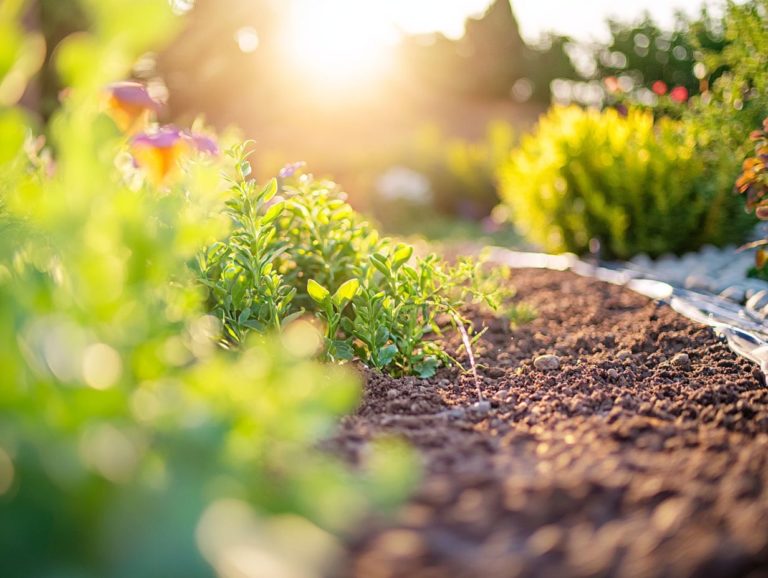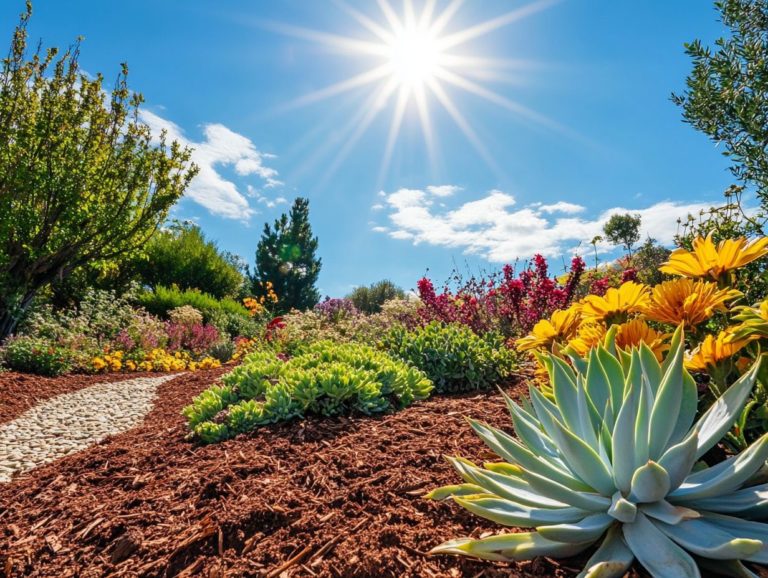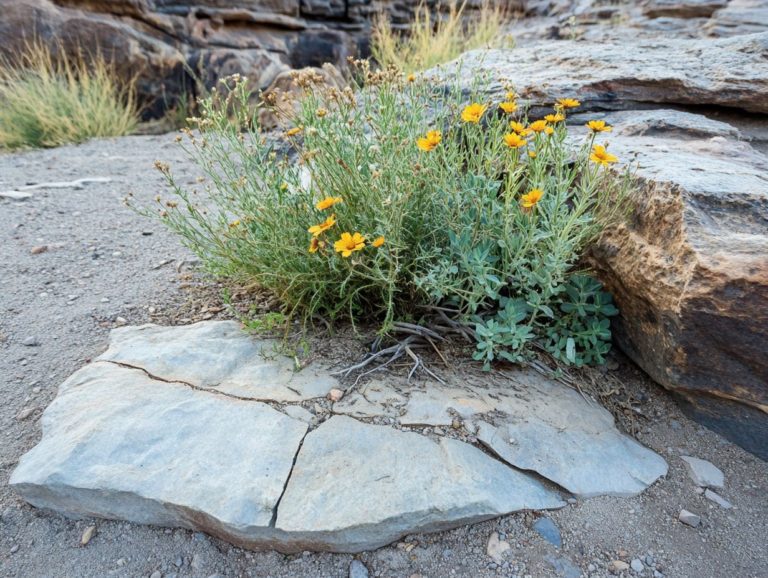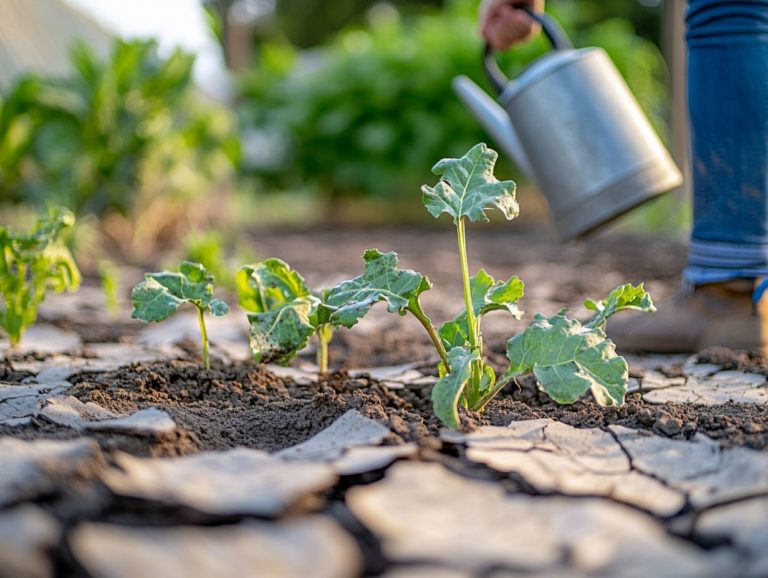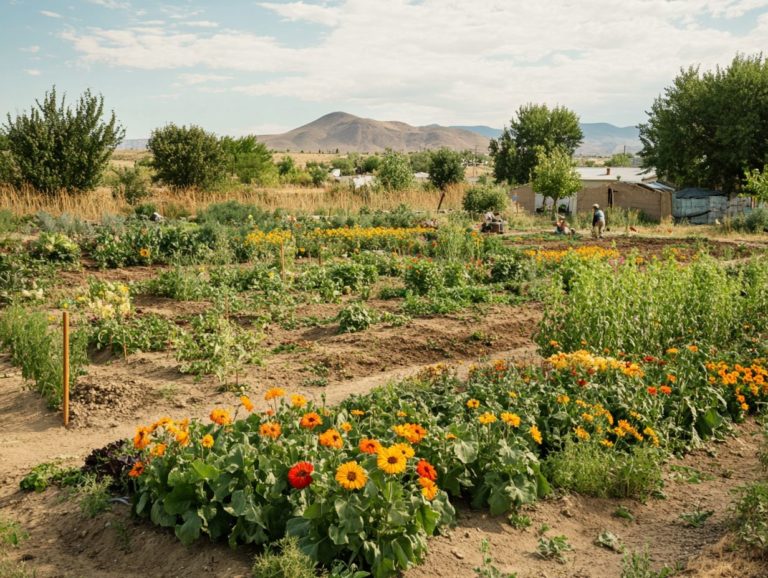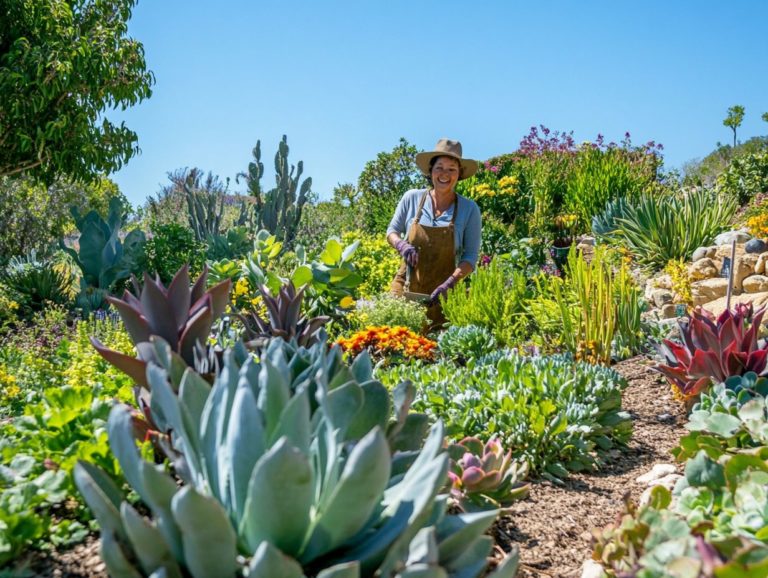The Role of Drought Plants in Pollinator Gardens
In a world where climate change is transforming our landscapes, grasping the intricacies of drought plants becomes essential for cultivating resilient gardens that nurture vital pollinators.
This exploration delves into the defining characteristics of drought plants, their pivotal role in enhancing pollinator habitats, and the myriad benefits these gardens provide to ecosystems.
Get ready to explore how to select and design your own drought-resistant garden! Discover how these remarkable plants can thrive in harmony with nature and play a crucial role in sustaining our environment!
Contents
- Key Takeaways:
- Understanding Drought Plants
- The Importance of Pollinator Gardens
- Incorporating Drought Plants in Pollinator Gardens
- Attracting and Supporting Pollinators
- Benefits of Using Drought Plants in Pollinator Gardens
- Frequently Asked Questions
- What are drought plants and why are they important in pollinator gardens?
- How do drought plants benefit pollinators?
- What are some examples of drought plants that are beneficial for pollinators?
- Can drought plants be used in all types of pollinator gardens?
- How should drought plants be cared for in a pollinator garden?
- Benefits of Including Drought Plants in a Pollinator Garden
Key Takeaways:
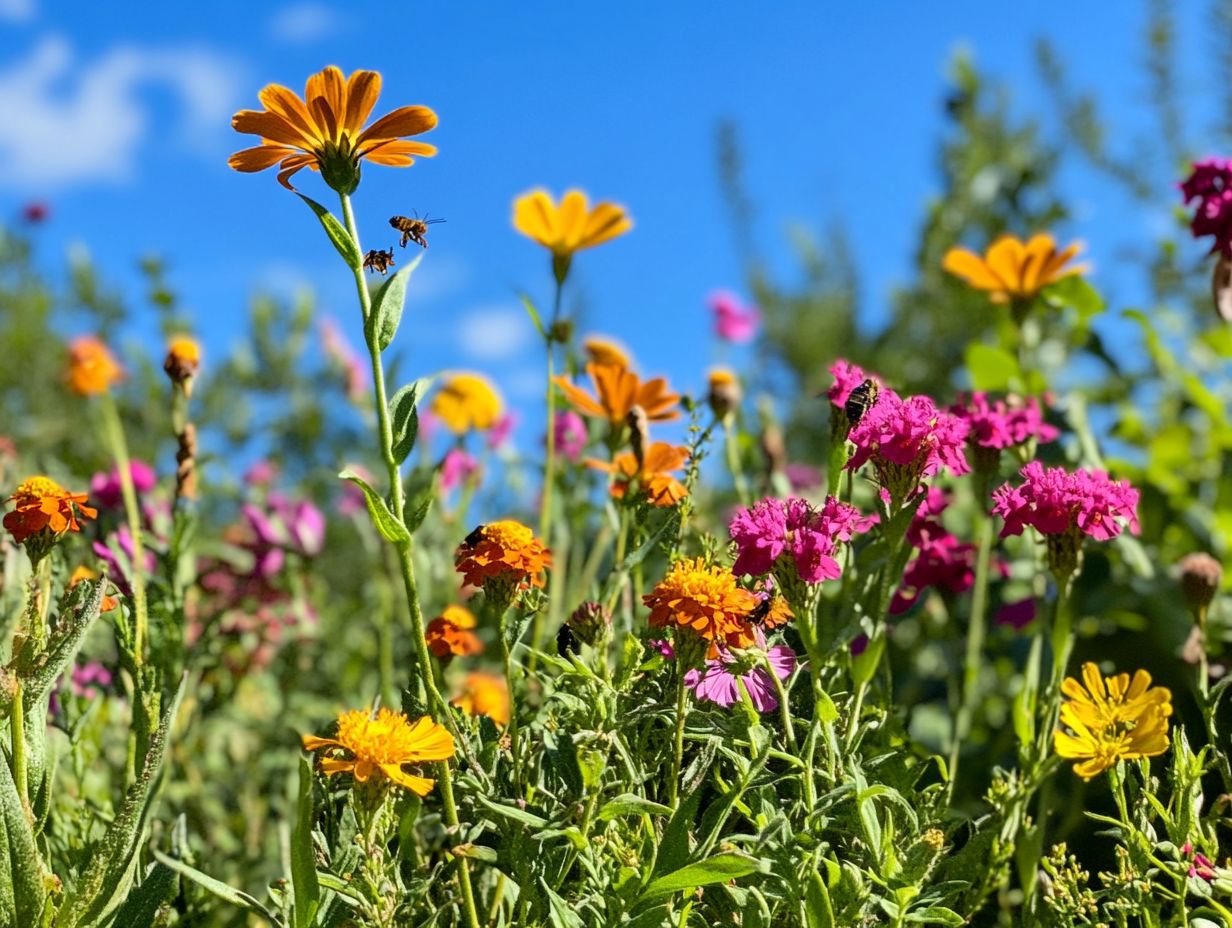
- Drought plants, with their unique characteristics, play a vital role in supporting pollinator gardens and preserving ecosystems.
- Incorporating drought plants in pollinator gardens attracts and supports pollinators while providing environmental and economic benefits.
- When designing and maintaining a drought-resistant garden, carefully selecting and placing the right plants is crucial for success.
Understanding Drought Plants
Understanding drought-tolerant plants is essential in today s evolving climate. Challenges like climate change and water scarcity necessitate selecting flora that flourishes with minimal irrigation.
These plants are uniquely adapted to thrive in arid conditions, significantly reducing water usage in your garden and promoting sustainability. Drought-tolerant plants often showcase remarkable traits, such as deep root systems and waxy leaves, designed to retain moisture.
They are particularly well-suited for water-saving landscaping (a landscaping method that uses little water). With this approach, you can conserve water while enhancing the beauty of your outdoor spaces.
Definition and Characteristics
Drought-tolerant plants are specially adapted species that thrive on minimal water, making them perfect for low-maintenance gardens.
These plants have unique physiological traits that enable them to flourish in arid environments. They often have modified leaf structures designed to reduce transpiration and specialized root systems that delve deep underground to tap into hidden water reserves.
Many feature thick stems and fleshy leaves, which allow for effective water retention. These plants require less maintenance than traditional plants, often needing minimal fertilization and sporadic pruning.
Thanks to these outstanding characteristics, drought-tolerant plants contribute to sustainable landscaping practices and play a crucial role in conserving water especially in regions that frequently face drought or limited rainfall.
The Importance of Pollinator Gardens
Pollinator gardens are essential for bolstering biodiversity and enriching ecosystems. They provide crucial habitats and food sources for vital pollinators, such as honeybees and butterflies.
By thoughtfully designing these gardens with nectar-rich blooms and a diverse array of plants, you create an inviting sanctuary for various pollinator species. This fosters a sustainable environment for both plant and animal life.
Cultivating pollinator gardens not only enhances your landscape but also promotes the overall health of the ecosystem.
Have you ever wondered how a garden can thrive with little water? Start your journey to a vibrant, drought-resistant garden today!
Benefits for Pollinators and Ecosystems
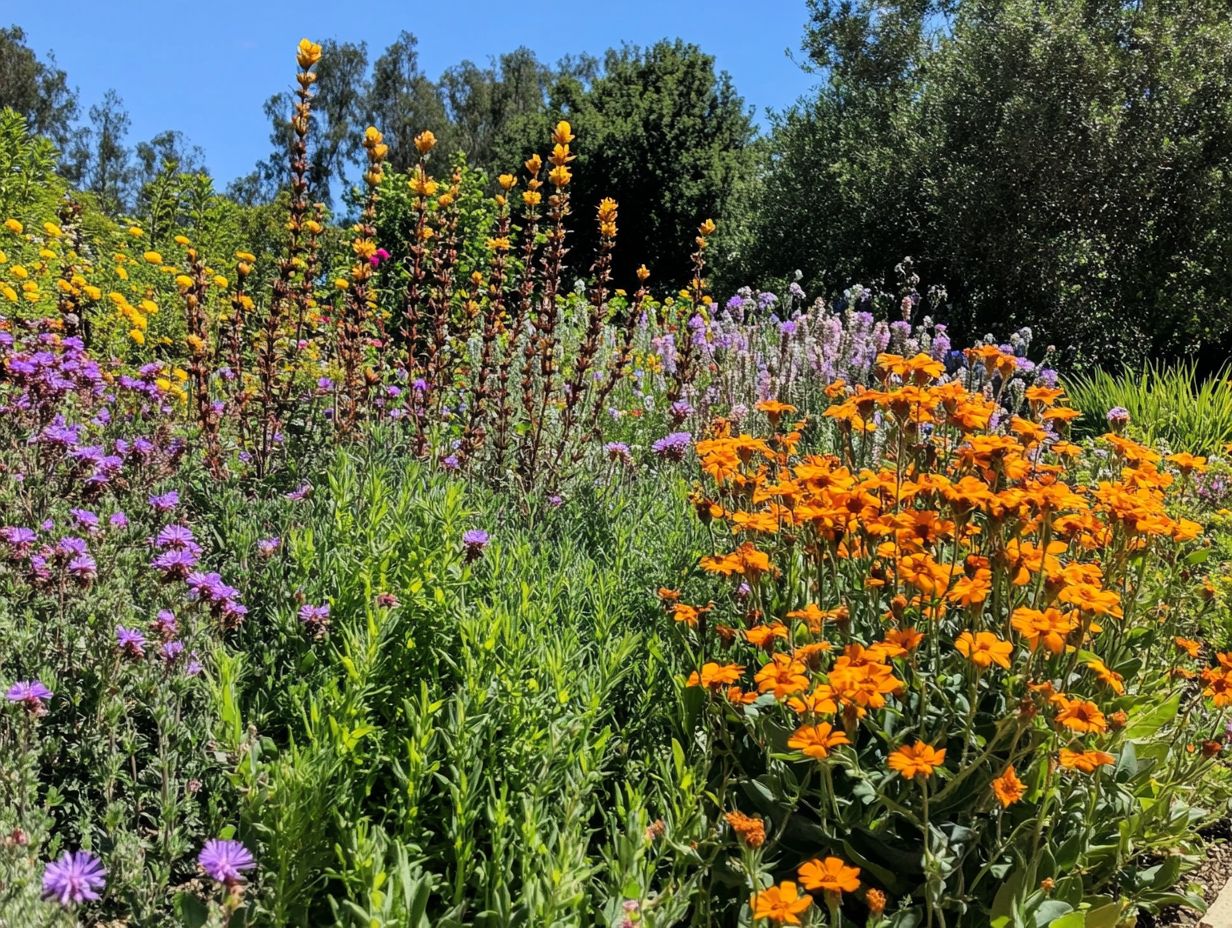
Pollinator-supportive gardens offer many benefits. They provide nectar-rich blooms that sustain bees, butterflies, and other vital species.
These gardens act as essential sanctuaries where diverse species flourish, contributing to greater biodiversity. Choosing native flowers like coneflowers and milkweed attracts honeybees, hummingbirds, and monarch butterflies. Each of these pollinators plays an important role in nature.
More plant variety supports different feeding habits and life cycles, enriching the food sources available for wildlife. These gardens improve soil health, reduce erosion, and create pollinator-friendly habitats. This fosters a healthier environment for everyone.
Incorporating Drought Plants in Pollinator Gardens
Add drought-tolerant plants to your pollinator garden! This smart choice creates a sustainable landscape that supports both pollinators and our planet.
By choosing native plants and drought-resistant species, you ensure a steady stream of nectar-rich blooms, even during dry spells. This is essential for attracting vital pollinators.
This thoughtful approach helps counter the effects of climate change. It enhances biodiversity, resulting in a garden that is both resilient and low-maintenance.
Choosing the Right Plants
Selecting the right plants for your pollinator garden means choosing a mix of drought-tolerant flowers and pollinator-friendly varieties that thrive in your specific hardiness zones. This intentional selection creates a resilient landscape and supports vital ecosystems.
For example, integrating plants like milkweed is essential. Not only are they drought-resistant, but they also provide crucial habitats for monarch butterflies. This makes your garden a welcoming haven for these beautiful creatures.
Likewise, coneflowers, with their striking appearance, attract bees and other pollinators with vibrant blooms. By prioritizing such plants, you enhance the biodiversity of your garden while embracing sustainable practices that nurture the flowers and the critical pollinators that depend on them.
Designing and Maintaining a Drought-Resistant Garden
Designing and maintaining a drought-resistant garden require you to embrace xeriscaping principles. Focus on low-maintenance plants and effective environmental controls.
To cultivate a thriving landscape, pay attention to your layout. Proper spacing enhances airflow and reduces competition for nutrients. Choose native plants that thrive in dry conditions to boost biodiversity and cut down on excessive watering.
Incorporating organic mulch helps retain soil moisture, while drip irrigation techniques deliver water directly to the roots. This optimizes water use. Improving soil health through compost and natural amendments enhances nutrient retention and resilience against drought, keeping your garden vibrant and sustainable even in harsh climates.
Attracting and Supporting Pollinators
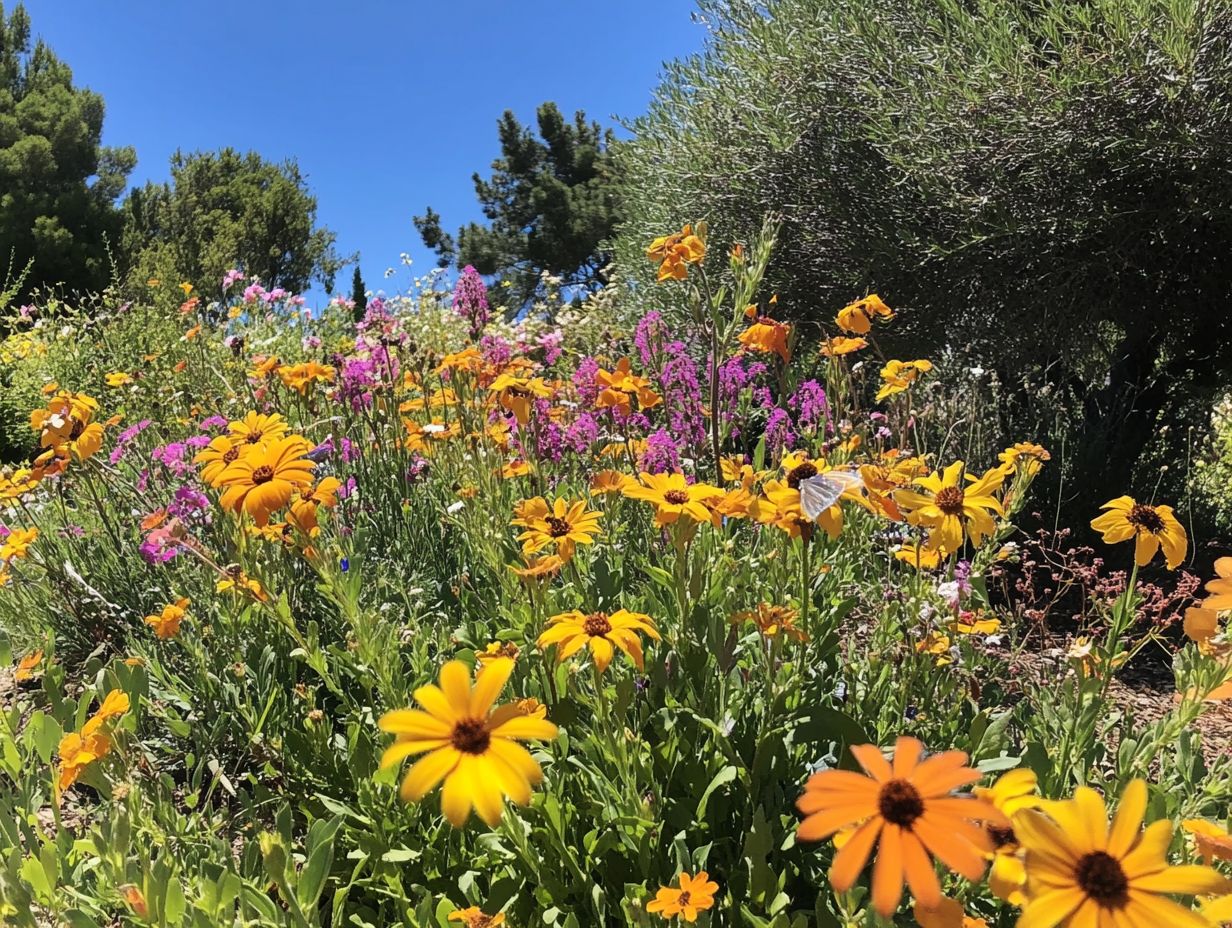
Attracting and supporting pollinators in your garden is vital for fostering a flourishing ecosystem. You can achieve this beautifully by incorporating a diverse array of pollinator plants and nectar-rich blooms that appeal to bees, butterflies, and other beneficial insects.
By carefully selecting these plants, you enhance the beauty of your garden while playing a crucial role in sustaining these essential creatures. Start planning your pollinator garden today and watch your backyard thrive!
Strategies for Attracting Bees, Butterflies, and Other Pollinators
To attract bees, butterflies, and other pollinators effectively, cultivate a diverse selection of plants with abundant, nectar-rich blooms. Ensure your garden remains free from pesticides.
Plant various species that bloom at different times. This keeps your garden appealing and provides a food source from early spring to late fall. Imagine mixing perennials like coneflowers and black-eyed Susans with annuals such as zinnias and cosmos. This vibrant display continuously draws in visitors.
Creating a pollinator-friendly habitat involves offering shelter using native shrubs and leaving certain areas of bare soil for ground-nesting bees. By strategically clustering your plants, you can make nectar more accessible while providing a safe haven for these essential creatures to thrive.
Benefits of Using Drought Plants in Pollinator Gardens
By incorporating drought-tolerant plants into your pollinator gardens, you unlock significant environmental and economic advantages. This choice boosts your water conservation efforts and creates crucial habitats for pollinators, supporting a variety of plants and animals.
Environmental and Economic Benefits
The environmental and economic advantages of incorporating drought-tolerant plants into your pollinator gardens are remarkable. These plants thrive on minimal water, playing a crucial role in climate resilience, making them a smart choice for your garden.
They enhance soil health, improve nutrient retention and structure, and minimize erosion. Additionally, they provide habitats for various pollinators, which is crucial for maintaining the balance of ecosystems.
From an economic standpoint, choosing drought-tolerant plants leads to considerable savings on your water bills and maintenance costs. Enjoy reduced resource expenditure while actively participating in conservation efforts.
This boost in ecosystem services can also enhance property values and contribute positively to community well-being.
Frequently Asked Questions
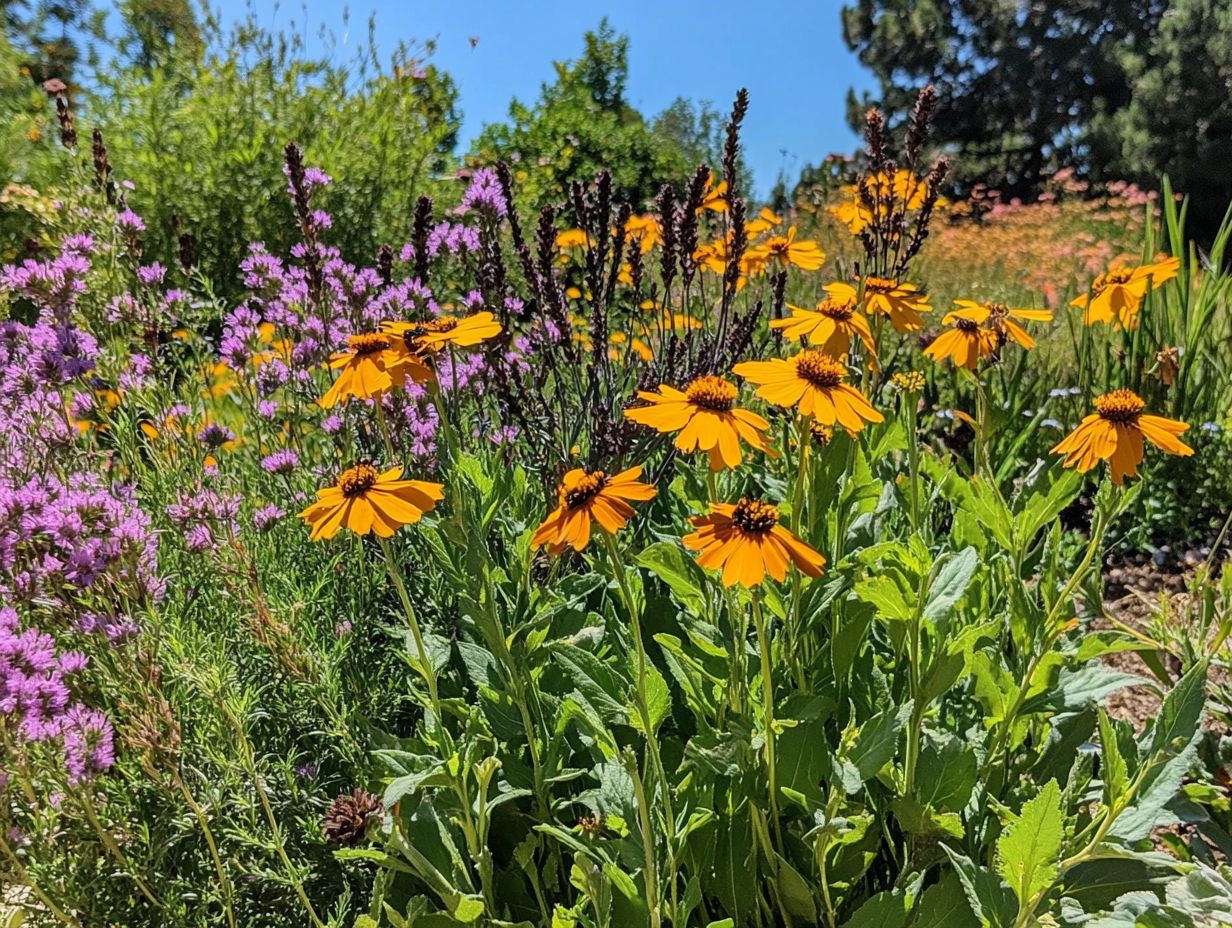
What are drought plants and why are they important in pollinator gardens?
Drought plants survive well in dry conditions, making them vital for pollinator gardens. They thrive in environments with limited water and provide food for pollinators during drought periods, highlighting the role of drought-resistant plants in biodiversity.
How do drought plants benefit pollinators?
Drought plants offer a consistent source of nectar and pollen, even during dry spells. Using native plants in drought gardening can attract various pollinator species, helping to increase the variety of plants and animals in your garden.
What are some examples of drought plants that are beneficial for pollinators?
Examples of drought plants that benefit pollinators include lavender, salvia, coneflower, catmint, Echinacea, yarrow, and butterfly weed. These plants are easy to grow, low maintenance, and attract a wide range of pollinators.
Can drought plants be used in all types of pollinator gardens?
Yes, drought plants can thrive in all types of pollinator gardens, including container gardens, rooftop gardens, and traditional outdoor gardens that receive full sun. For a more sustainable approach, consider using native plants in drought landscapes, as they are suitable for dry climates or during droughts.
How should drought plants be cared for in a pollinator garden?
Water drought plants deeply but infrequently, allowing soil to dry out between waterings. Regular pruning and deadheading encourage new growth and blooms. Adding a layer of mulch retains moisture in the soil and supports plants like Globemallow and Russian sage.
Join the movement! Start your own pollinator garden today to create a haven for these vital creatures.
Benefits of Including Drought Plants in a Pollinator Garden
Drought plants offer many advantages for your pollinator garden. They are low maintenance, need little watering, and understanding the role of shade in drought gardening can further enhance their benefits.
These plants are also resistant to pests and diseases. This means less worry for you and more time to enjoy your beautiful garden.
Incorporating drought plants adds variety and visual appeal. Consider adding plants like Rudbeckia hirta and Portulaca grandiflora for a vibrant garden.

